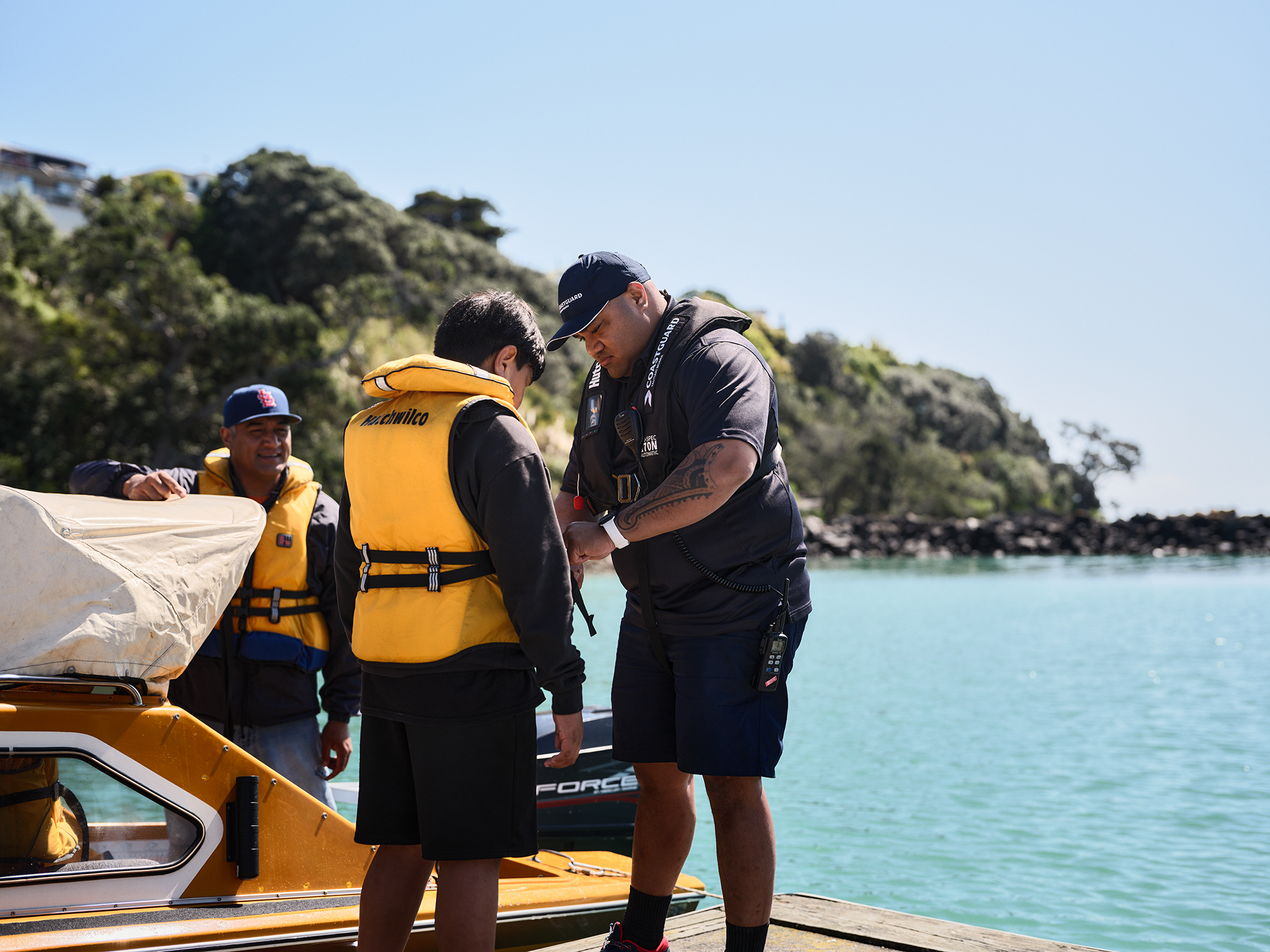Find out how to choose the right lifejacket type and fit, and how to look after your lifejacket.
A lifejacket is your key piece of safety equipment on the water. Like wearing a seatbelt in a moving car, a lifejacket keeps your mates and family safe if anything goes wrong. Whether you're out in a remote spot or in sight of land, it’s crucial to have a lifejacket that provides plenty of buoyancy in case you end up in the water.
In many places around New Zealand, regional bylaws require you to wear a lifejacket when you're on boats under 6 metres in length. With statistics showing that two-thirds of those who drowned could have survived simply by wearing a lifejacket, why wouldn’t you ensure you and your family are safe on the water?
Choosing the Right Lifejacket
There are two main types of lifejackets for recreational boating: foam lifejackets, which float on their own, and inflatable lifejackets, which require inflation. Choosing the right lifejacket depends on who will be wearing it and the type of boating you’re doing.
Foam Lifejackets
Pros: They are durable, offer good hypothermia protection, have buoyant collars to help keep the head above water, and are best suited for inshore activities.
Cons: They do not turn an unconscious user onto their back and aren’t designed for rough conditions.
Inflatable Lifejackets
Pros: Comfortable and lightweight, they provide at least 150N of buoyancy (some models up to 300N), and are designed to keep the wearer upright if unconscious.
Cons: They require annual servicing, and the gas cylinder must be replaced after inflation. These jackets can also be punctured.
Check out this video for everything you need to know about how to maintain and look after your inflatable lifejacket.
Special Types for Kayaking, Paddleboarding, and Skiing
For low-speed activities like kayaking or stand-up paddleboarding (SUP), slim buoyancy vests are ideal, providing freedom of movement and good protection. However, for higher-speed water sports like jet skiing or tubing, buoyant lifejackets with extra protection against high-impact wipeouts are recommended.
Kids’ Lifejackets: Snug as a Hug!
Ensure children’s lifejackets fit snugly and come with crotch straps to prevent riding up in the water. Don’t be tempted to buy one for them to “grow into.” A poorly fitted lifejacket can easily slip over their head in an emergency.
For younger kids or novice boaters, foam lifejackets are recommended, as they provide sufficient buoyancy and are easier to manage than inflatable ones, which are better suited to those older than 14 and more comfortable in the water.
How to Choose a Well-Fitting Lifejacket
Once you've chosen the right type of lifejacket, it's essential to ensure it fits properly:
For Adults:
It should fit snugly, like a good coat, without being too large or small.
Check that you can do up the buckles easily and that the jacket provides sufficient buoyancy (measured in Newtons).
Inshore lifejackets must have at least 71N of buoyancy, while open water lifejackets should provide 150N.
For Kids:
Avoid buying a lifejacket that’s too large. Instead, buy one that fits snugly without too much space.
A good rule is to ensure no more than two finger-widths between the shoulders and the jacket. Lift your child by the lifejacket—if they slip out, it’s too big!
The Importance of Crotch Straps
A crotch strap ensures the lifejacket doesn’t ride up when you’re in the water, which can be dangerous, especially if the lifejacket is too big. While some lifejackets come with crotch straps, others can be fitted with an adjustable one-size-fits-all crotch strap from your local marine retailer.
Learning from Tragedy: Kaipara Bar Incident
In 2016, eight people died after the fishing charter vessel *Francie* capsized crossing the Kaipara bar. Investigations found that proper fitting lifejackets with crotch straps could have significantly increased their chance of survival. This tragedy highlights the importance of choosing the right lifejacket and using a crotch strap for bar crossings or rough conditions.
Looking After Your Lifejacket
A lifejacket, like any piece of safety equipment, won’t last forever. However, with proper care, you can extend its lifespan.
Foam Lifejackets
Check for damage: Look for any rips, tears, or UV damage. If the fabric feels brittle or the lifejacket is waterlogged, replace it.
Buckles and webbing: Ensure they’re in good condition and replace any that are damaged.
Weight test: A foam lifejacket should feel light. If it feels heavy, the foam may be waterlogged, reducing its buoyancy.
Inflatable Lifejackets
These jackets require more maintenance:
CO2 cylinder: Check that the cylinder hasn’t been pierced or corroded.
Annual checks: Inflate the lifejacket manually and leave it overnight to ensure it holds air. If it deflates, have it serviced or replaced.
Corrosion: Corrosion on the CO2 cylinder or within the jacket can compromise its functionality.
Regular Checks for Safety
Pre-wear check: Before heading out, make sure you know where your lifejacket’s whistle, oral inflation tube, and reflective patches are located.
Safety indicators: Most inflatable lifejackets have red/green safety indicators to signal readiness.
Fitting: Ensure your lifejacket fits correctly before every outing. Don’t forget to replace the CO2 cylinder after every inflation.
Remember, your lifejacket is the most important piece of equipment when you're on the water. Choose the right one, ensure it fits snugly, and take good care of it. Whether you’re kayaking, fishing, or out with the family, wearing a well-maintained lifejacket could save your life.
